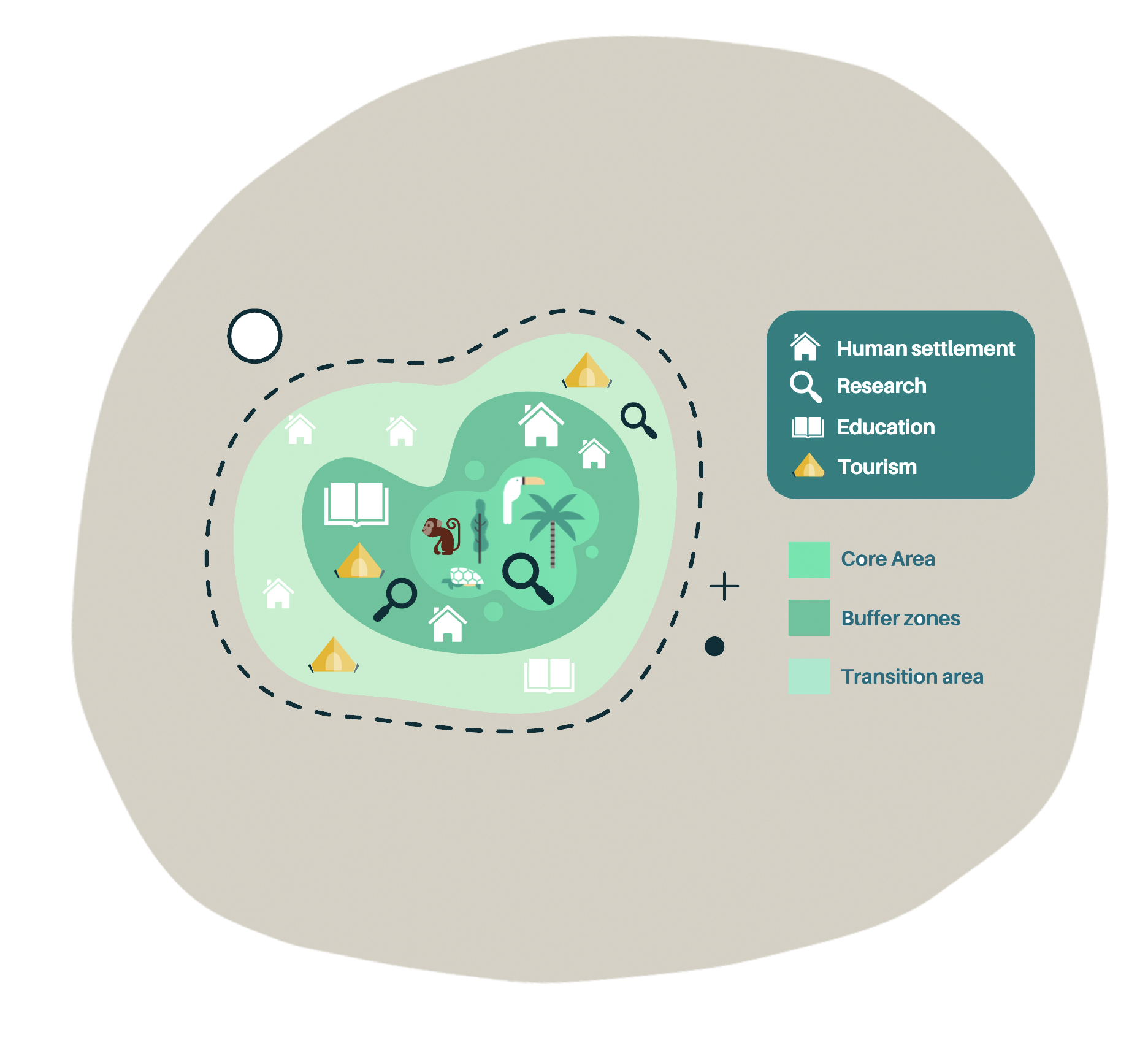Phase 2: Pre-analysis and process
Here are some general steps that may be considered in establishing a Biosphere Reserve:
Preliminary Assessment
Identify a potential area that meets the criteria for a Biosphere Reserve. This area should showcase a balance between conservation, sustainable development, and logistic feasibility. Identify an area with a unique combination of ecosystems, biodiversity, and cultural values and a strong identity. Consider areas that are representative of Nordic natural ecosystems. The area should be representative of its biogeographic region and significant for biodiversity. Governance structures should be effective, democratic, and inclusive of various stakeholders.
Stakeholder Engagement
Engage the local community, governmental authorities, NGOs, and other stakeholders to ensure their support and involvement in the process. Community participation is a key element in the success of a biosphere reserve.
Feasibility Study
Establishing a Biosphere Reserve is a process that requires collaboration among various stakeholders and adherence to international standards. The specific steps may vary slightly depending on the country and its regulatory framework. Local context, cultural considerations, and community engagement are critical factors in the success of a Biosphere Reserve in the Nordic countries or any other region. Conduct a feasibility study to assess the ecological, social, and economic aspects of the proposed area. Evaluate the biodiversity, ecosystems, and cultural significance.

Funding and Finance – also in the long run!
Diverse funding sources should be identified before and during the nomination process.
Long-term core funding is essential for effective implementation and should guarantee salaries and support critical meetings.
Zonation and Management Planning
Develop a management policy (strategy) or plan outlining how the area will be managed to promote sustainable development. This document should address sustainable development goals, conservation strategies, and community involvement. It should include strategies for biodiversity conservation, sustainable resource management, and socio-economic development. Involve stakeholders in establishing a strategy/management plan, reflecting the goals and activities, and showcasing how people can contribute.
The design of a biosphere reserve includes zoning to delineate different areas for core conservation, buffer zones, and transition areas.
Biosphere reserves have three different zones:
Core areas
They comprise a strictly protected zone, or zones, that contribute to the conservation of landscapes, ecosystems, species and genetic variation.
Buffer zones
They surround or adjoin the core area(s), and are used for activities compatible with sound ecological practices that can reinforce scientific research, monitoring, training and education.
Transition area
The transition area is where community foster socio-culturally and ecologically sustainable economic and human activities.
Nomination Proposal
Develop a nomination proposal that outlines the boundaries, objectives, and management plan for the Biosphere Reserve. This proposal should align with the criteria and technical guidelines.
Obtain Approval from the National Committee
Work closely with national UNESCO MAB committees if you have one (e.g. Norway and Sweden) to obtain their approval and support. Remember that each Nordic nation has its own procedures and requirements related to UNESCO's MAB Programme, so it is important to collaborate closely with national authorities and MAB committees.
Government Approval
Obtain approval from the relevant national governmental authorities for the establishment of the Biosphere Reserve. This may involve coordination with multiple government agencies at national, regional and local levels.
International Coordination
Coordinate with international organizations, including UNESCO, to ensure that the proposed Biosphere Reserve aligns with global standards and guidelines.
Monitoring and Research
Implement monitoring and research programs to track the ecological and social impacts of the Biosphere Reserve. This helps in adaptive management and continuous improvement.
Develop Educational Programs
Develop educational programs and outreach initiatives to raise awareness among local communities and visitors about the importance of the Biosphere Reserve and the need for sustainable practices.
Implementation and Evaluation
Begin the implementation of the management plan and regularly evaluate its effectiveness. Adapt the plan as needed based on the results of monitoring and feedback from stakeholders.
